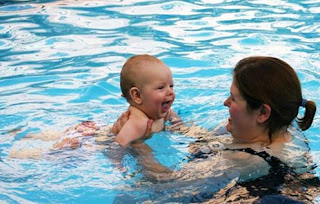Swimming pools are dangerous and having one in your backyard is inviting tragedy.
Though I have the deepest sympathy for the individual families involved, these news stories always bother me. I believe they do more harm than good. They might achieve their goal of reducing the number of pools built, but in the long run, these stories actually cost more lives than they save.
Here’s why:
The year is 1965 and I’m a teenager. My brother and I are in a canoe on a large lake near Yellowstone Park, no more than 50 yards offshore. Without warning (or maybe we just aren’t paying attention), the wind whips up and the big lake is suddenly covered in whitecaps. The canoe starts rocking and my brother tries to stabilize it by standing up and leaning. In a flash, we’re both in very cold water. Unable to tip the canoe upright, we decide we have no choice but to swim ashore. We do.
To this day, I am convinced I could have drowned in that lake. But I survived for one simple reason: I knew how to swim. And I had learned that skill in a backyard pool.
So, my own life experience taught me just the opposite of what the annual springtime newspaper and TV stories would have us believe. I know in my heart that pools actually save lives by reducing the number of deaths due to drowning.
This year, I decided to do something about this chronic misinformation by trying to scientifically prove how many lives are saved annually because people learned how to swim in backyard pools. There must be a way of calculating the number of children who are taught to swim each year in pools, and compare that with the number of aquatic accidents. I wondered: Are these statistics available anywhere?
I checked the Internet for clues and found a study by the Journal of the American Medical Associate, which stated that 73 percent of all drownings occur in natural bodies of water. An earlier report by the Centers for Disease Control found that only 10 percent of drownings occur in swimming pools.
I spoke to a professor of statistics at University of California-Berkeley and asked him if it would be possible to scientifically prove my point. His first response was to say that yes, one could make some assumptions about the number of lives saved. But because it involves a guess about what might have happened, the results would always be disputed, even by those with good intentions, such as advocates of swimming pool safety.
But the logic of my point is irrefutable: If 73 percent of drownings occur in natural bodies of water and if most swimmers learn the skill in pools, then many, many lives must be saved by giving our kids time in backyard pools.
Let’s have some articles this season about that. And let's take it a step further. Let's teach every child to swim! Pool builders, don’t be shy. If a homeowner hesitates about starting a pool-building project this summer because of their children and safety … remind them that there is no better reason to build a pool and remind them that swimming is a life skill. One of the gifts a parent can give a child that will truly last a lifetime.

